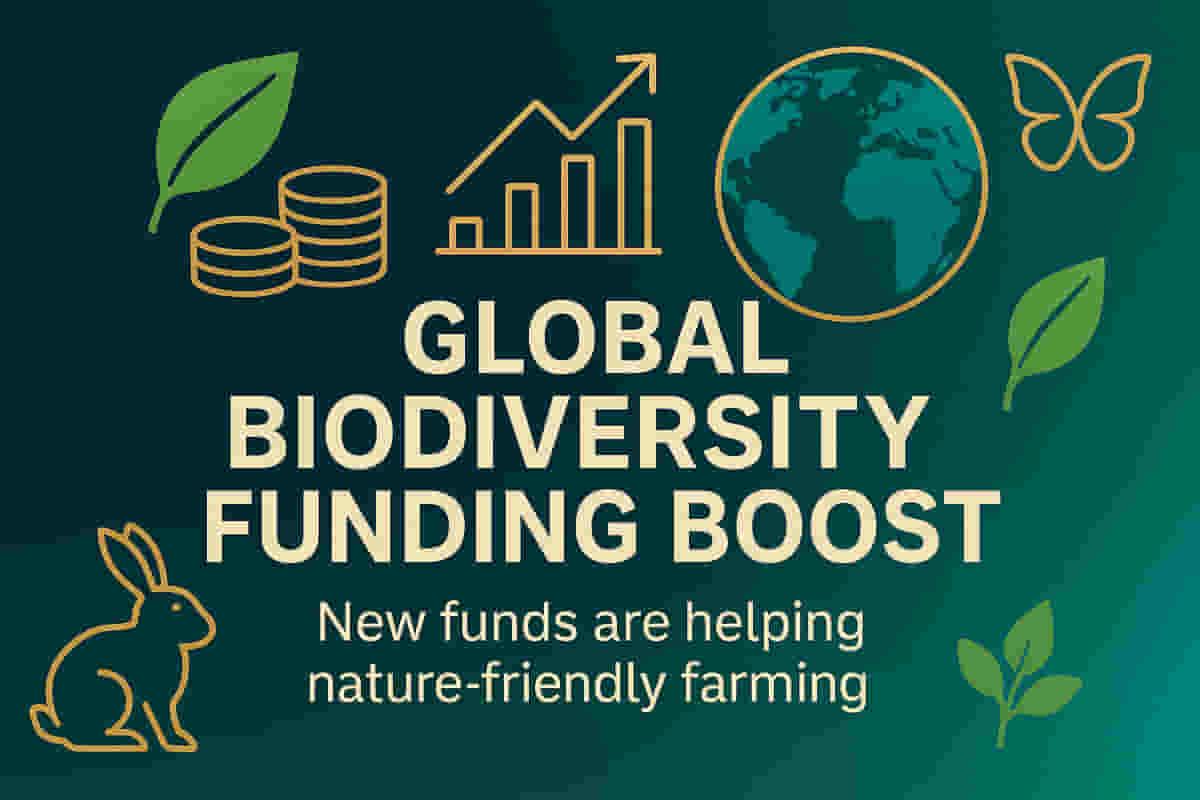Global Biodiversity Fund disburses $5.8 Million to Seven Countries for Nature-Friendly Farming
Environment
|
30th October 2025, 11:55 AM

▶
Short Description :
Detailed Coverage :
A substantial finance gap exists for global conservation goals, and new funding mechanisms are emerging to address this. The Food and Agriculture Organization of the United Nations (FAO) has assisted seven countries in securing $5.8 million in grants from the Kunming Biodiversity Fund (KBF). This fund supports projects in the Cook Islands, Madagascar, Mexico, Nepal, Sri Lanka, Turkey, and Uganda, focusing on making farming systems more nature-friendly and helping nations meet global biodiversity targets.
These initiatives are part of the Kunming-Montreal Global Biodiversity Framework (KMGBF), a 2022 international plan adopted by 196 countries to halt and reverse biodiversity loss. The framework includes ambitious goals for 2030 and 2050, such as ecosystem restoration and increased financial resources. One key target aims to mobilize at least $200 billion annually by 2030 from all sources for biodiversity conservation.
The KBF itself was launched in 2021 by China's Ministry of Ecology and Environment, in partnership with the United Nations Environment Programme and others, with an initial pledge of 1.5 billion yuan (approximately $200 million) from China to aid developing countries.
The recent funding will support specific projects including mainstreaming biodiversity into agriculture in Madagascar, Uganda, and Mexico; empowering communities and traditional knowledge in the Cook Islands; managing invasive species in Nepal and Sri Lanka; and strengthening ecosystem resilience around Lake Eğirdir in Turkey. FAO Director-General QU Dongyu stated that the funding will help developing countries achieve biodiversity goals through sustainable agriculture, boost food diversity, and support climate solutions.
Impact: This news highlights a growing global commitment and financial mechanism for biodiversity conservation, particularly linking it to agriculture. This trend is significant for investors and businesses focused on Environmental, Social, and Governance (ESG) principles, sustainable agriculture, and conservation finance. It signals potential for increased investment in nature-based solutions and sustainable food systems worldwide. Rating: 6/10
Difficult Terms: Biodiversity: The variety of life on Earth, including all plants, animals, fungi, and microorganisms, as well as the ecosystems they form. Finance gap: The difference between the amount of money needed to achieve conservation goals and the amount of funding currently available. Kunming-Montreal Global Biodiversity Framework (KMGBF): An international treaty adopted in 2022 by 196 countries aimed at protecting biodiversity and ecosystems globally, with specific targets for 2030 and 2050. Invasive alien species: Non-native species that are introduced into an ecosystem and cause harm to native species, habitats, or human interests. Agrifood systems: All the elements and activities related to the production, processing, distribution, and consumption of food. Ecosystem resilience: The capacity of an ecosystem to withstand disturbances and continue to function, or to recover quickly after a disturbance. Digital sequencing information: Data derived from the genetic sequencing of organisms, often stored and analyzed digitally. Genetic resources: Biological material that contains hereditary information, such as DNA, from which valuable products or services can be derived. Benefit-sharing: The equitable distribution of the benefits arising from the commercial or other utilization of genetic resources and associated digital sequencing information with the providers or owners of these resources, often Indigenous Peoples and local communities.